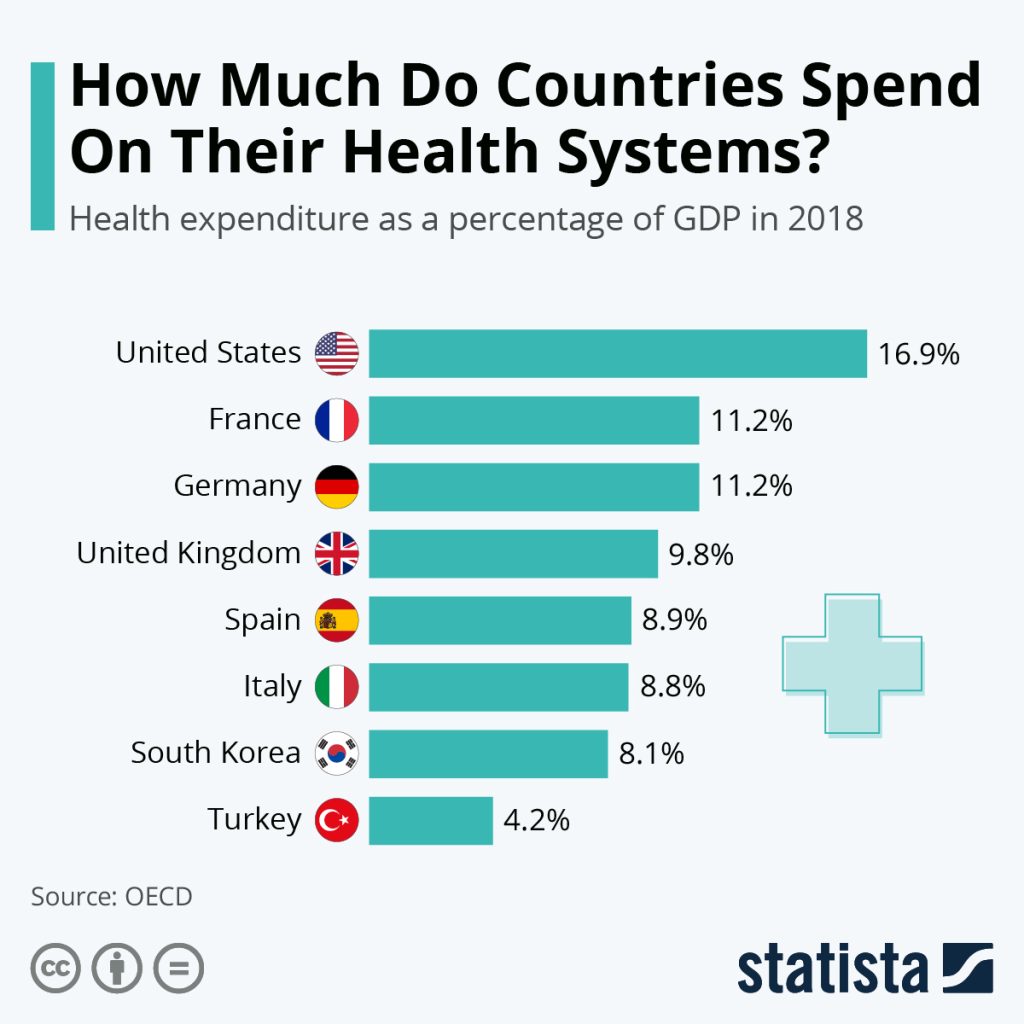With almost 2 million confirmed cases globally, the COVID-19 pandemic continues to place a massive strain on the world’s healthcare systems.
One would expect that for developed countries, handling this pandemic will be a manageable task given that they have advanced health systems in their arsenal. While this is the case for some, there are a lot of highly developed countries that are gravely overwhelmed by the disease outbreak.
This pandemic reveals to us that there is more to resilience than just a high level of expenditure to healthcare.
With this, how much are countries spending on healthcare and how are they holding up in this pandemic?
Highlights
In 2018, the OECD Institute collected healthcare data of their member countries that were all compiled in their recent publication, Health at a Glance 2019.
One of the data sets collected is the size of healthcare expenditure relative to the 2018 gross domestic product (GDP) of a country. The graph above by Statista displays selected countries from the report.
At 16.9% of the 2018 GDP, the United States has the largest size of expenditure in health care.
However, the country is also the most inflicted by the COVID-19 pandemic according to the latest records, with nearly 500,000 confirmed casesas of April 13.
European countries like France (11.2%), Germany (11.2%), United Kingdom (9.8%), Spain (8.9%), and Italy (8.8%) are among the highest spenders within the members of OECD.
In 2018, all of them have spent at least as much or greater than the average share of healthcare expenditure of OECD countries, which is 8.8 percent.
However, all these European countries mentioned also recorded some of the highest COVID-19 cases in the world. Each of these countries have confirmed cases ranging from 50,000 to a whopping 160,000.
This places them in just the same scenario as Turkey, with more than 30,000 confirmed cases. Yet Turkey is one of the lowest healthcare spenders in OECD, allocating only 4.2% of their 2018 GDP for their health system.
Beyond large funding
In contrast, there is also another high-spender South Korea, which allocated 8.1% of their 2018 GDP to healthcare. They have only experienced around 165 deaths as of April 1, with their confirmed cases already pretty much stabilized at this point.
What makes South Korea different from the rest?
South Korea has been swift in their response to the emergence of COVID-19, almost immediately proceeding to mass testing, contact tracing, and isolation of confirmed cases.
This of course initially inflated the number of confirmed cases in the country, which is about 10,384 as of April 8. However, a huge proportion (6,776) of these confirmed are already marked as recoveries. The goal of flattening the curve is nearly attained.
Granted, large allocations to healthcare is much welcomed to enable the improvement of health systems. However, this would not suffice if the goal is to be resilient in the event of sudden health crisis situations such as the COVID-19 pandemic. Quick response, long-term planning, and vigilance are also equally important aspects that should not be taken for granted.











